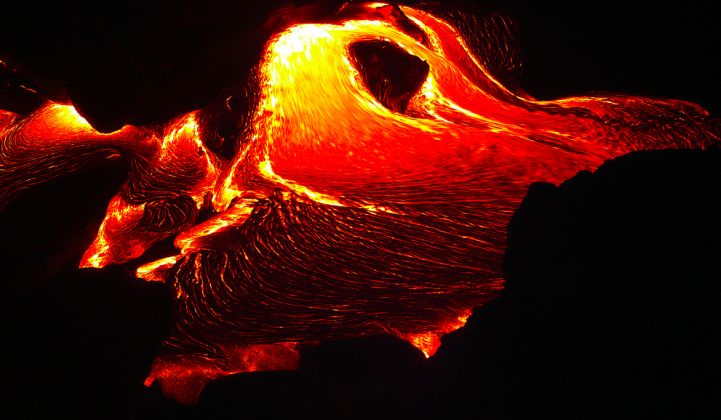[Editor's note: Updated at 1 p.m. PT on March 2 to include HECO's response.]
The latest skirmish in the Hawaiian solar power struggle stems from a letter sent out last week by HECO to 50 Big Island residents that suggested that until the islands' net energy metering policy is settled, interconnection approval of new PV would be on hold, according to a report on KHON Honolulu.
One in nine Hawaiian residences are PV-powered, the highest percentage of solar penetration of any U.S. state. But the momentum in installing solar has been lost due to a slowdown in PV approvals by the utility as it seeks to contend with the technological and economic impacts of ubiquitous solar.
Still, the Public Utilities Commission did not seem to take this kindly and reacted quickly with an order. Here are the key excerpts worth reading:
- "Stated simply, the policy is that the HECO Companies have an affirmative duty to interconnect a potential customer."
- "However, in those cases where the HECO Companies determine that a proposed PV interconnection will impact circuit- or system-level security and reliability, the HECO companies must fully document their reasons for denying the application."
- "Future letters...relating to the denial or delay of interconnection of residential rooftop photovoltaic systems to the grid, shall first be submitted to the Public Utilities Commission...10 business days prior to the proposed issuance date with full documentation in support of their reasons for proposing to issue the letter."
- "The undersigned agree that resolution of the NEM [net energy metering] issues cannot be achieved within a 60-day period if all interested parties are to be provided with an adequate opportunity to address these issues."
The Honolulu Star-Advertiser quotes PUC chair Randall Iwase as saying that the PUC's control over the utility is necessary to get Hawaii off of fossil fuels and adopt more renewable energy.
Darren Pai, a spokesperson for Hawaiian Electric, told Greentech Media, "Some media reports incorrectly have suggested that we were trying to hold up all solar installations. This was not the case. The letter was sent to some customers who are on circuits with a very high amount of installed PV. We are continuing to follow the established net energy metering process, which has helped make Hawaii a national leader in rooftop PV. At the end of 2014, approximately 12 percent of our customers had rooftop PV systems, with more than 51,000 systems installed. That growth has continued in 2015 with more than 3,000 systems installed so far this year."
Pai continued, "Regarding the February 27 letter, we appreciate the Public Utilities Commission’s guidance and direction. We are continuing to accept, review, and approve net energy metering applications under the processes, technical reviews, and timeframes previously approved by the PUC."
"Importantly, the PUC letter recognizes our responsibility to ensure reliable service to our customers, and that reliability is a growing issue with higher levels of solar. [...] We view the agreement with the PUC as a positive step toward clarifying policies to ensure solar can continue to increase in a safe, fair and sustainable way. We remain committed to achieving those goals for our customers as part of our larger energy goals to achieve by 2030: Tripling the amount of distributed solar, increasing renewable energy to 65 percent, [and] decreasing bills by 20 percent."
The mission of Hawaii's investor-owned utility, HECO, is to keep the grid safe, reliable, accessible and profitable. Hawaii's PUC ensures the state's energy goals are met while keeping rates affordable for Hawaiians. The two aims don't always align, and the friction between those two forces is a harbinger of struggles to come in other utility territories with high-penetration PV.
Below is the full text of Friday's order from the PUC.
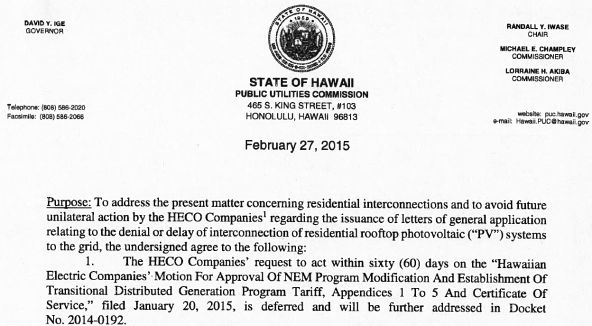
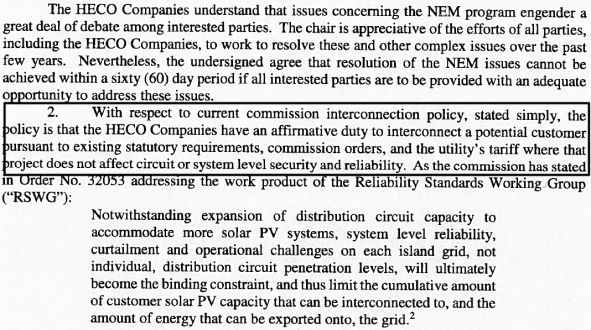
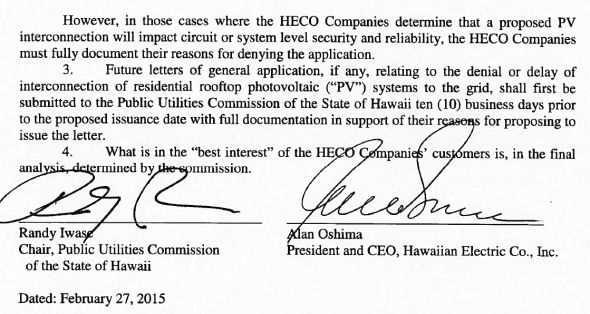
Last month, GTM's Jeff St. John analyzed an Energy Information Administration report on solar energy in the island state. Excerpts of his article follow.
The EIA released a report on Hawaii’s solar status last month that lays out the state’s situation in graphic detail. Over the past five years, net-metered solar capacity has skyrocketed on the island of Oahu, and has grown significantly on the smaller, more constrained grids of Maui and the island of Hawaii (the “Big Island”).

Big wind farms and thousands of solar rooftops are changing the shape of Oahu’s energy supply-demand curve, in ways that threaten grid stability as well as the economics of generating most of its power with imported oil. DOE labs have been working with Hawaiian Electric, the company that runs utilities on Oahu, Maui, Molokai and Hawaii, to track these system effects, with results like these showing the telltale duck shape -- or, as HECO has dubbed it, the “Nessie curve” -- caused when midday solar exceeds demand, then drops off to leave the utility with steep ramps in demand to match with limited resources.
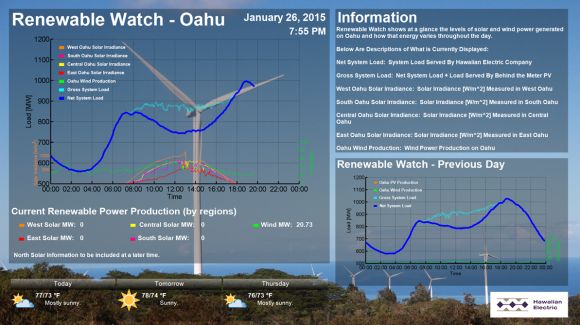
Hawaii faces local grid problems as well. On Oahu, solar penetration has increased to beyond daytime minimum load on many distribution grid circuits, meaning that there’s more solar power being generated than electricity consumed by customers on that section of the grid. That’s the problem that led HECO to slow down new permits last year -- and prompted the Hawaii Public Utilities Commission to respond with a broad set of orders, demanding that the state’s primary utility make fundamental changes to how it manages distributed energy.
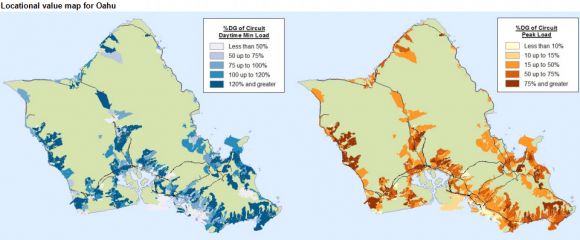
DOE’s National Renewable Energy Laboratory is helping out on this front by hosting tests of smart solar inverter capabilities with the Electric Power Research Institute and big third-party-solar provider SolarCity. That work led directly to HECO’s proposal this month to double the amount of solar it’s comfortable permitting on already-impacted circuits, from 120 percent to 250 percent of daytime minimum load, without causing grid-destabilizing voltage problems.
By easing the bottleneck on new solar projects, HECO also hopes to justify a concurrent plan to replace its lucrative net-metering tariff with a new set of credits that would pay roughly half as much for customer-generated power.
NextEra Energy is buying Hawaiian Electric Industries for $4.3 billion, and thus will inherit this solar situation and PUC/utility dynamic.
